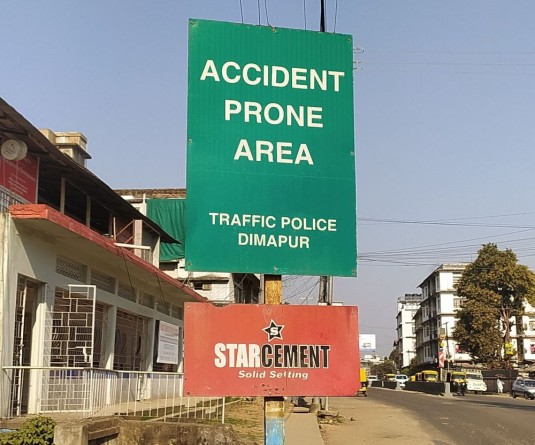
Nikay Besa Konyak
The status of Konyak Language in the present day has had some major developments when being compared to the previous periods. Notable positive changes have taken place such as literature developments, consciousness of the community towards language developmentsand different works of local researches on the language.
Some of the literature developments are: ‘Konyak grammar’ (2010) by KS Nagaraja which is the sole grammar book in Konyak Language serving as the only source instudying Konyak Grammar among scholars. ‘Manlam Lai (the Book of Knowledge)’ (2014) by Manto Wangshu is a bilingual book which serves as a good source for the learners of Konyak language. ‘Konyak Ngaojong (Konyak Dictionary) 1st Edition (2015) by Rev. Chingang is the only Konyak- English Dictionary compiled by a native speaker of Konyak language and serves as the only reliable source to study the vocabulary of Konyak Language.
The Konyak language has even occupied a special place in the constitution of Konyak Union where constitution No. 9 (1) and Resolution No.3(c) of the 2007 states that the “Ku shall exercise its power to inspire and spread the Konyak language”. Introduction of Konyak local dialects in the primary and middle school levels within the District with the initiatives of the present Language Officers and the Literature board of Konyak Community,before the implementation of Three language policy by Govt. of Nagaland is true evident that the community has been striving towards the preservation of Konyak Language. Article 350 b of the Indian constitution directs that there should be a special officer for linguistic minorities, Nagaland, through the department of school education, appoints language officers for every tribe, who are aided by assistant language officers and language assistants to develop textbooks for schools for all the approved official tribal languages. Currently all tribes have a language officer, and this has made great contributionsto the mother tongues. Presently, N. Nyeiang konyak is the language officer representing konyak community.
Department of Linguistics, Nagaland University has started contributing research field to the Post Graduate scholars to undergo preliminary research on Naga languages. During the 2015-2017 academic sessions, the Department has provided the opportunity to 7 students to work on the different aspects of Konyak Language. The researches undertaken by them will serve as the stepping stone for further researches on Konyak Language.
‘A preliminary investigation of the speech sounds of the Naga language’, a project under SCERT by Mimi Ezung, N. Nyeiang, H.Khango Konyak, and S.Wanshom Konyak is an extensive research under process where a reliable study about the sounds of Konyak language can be found.
All these works and proceedings show that the status level of the Konyak Language is likely to be still at the very initial stage as compared to other languages but not static.
Despite of all the developments, if we are to clearly look at the present scenario of konyak language in konyak society, we will see that other languages are dominating Konyak language. The present scenario indicates that most natives cannot converse each other in native languages.Nagamese language is used as the Lingua franca among the natives at a rate of swallowing Konyak Language. As English is used as the medium of instruction in schools, colleges and universities, the younger generation especially those born outside the native villages tend to be more comfortable in the foreign languages rather than their native language. We will also witness Major problems in the orthography of the Konyak language due to the inconsistency writing system from author to author.
Example- Roman orthography cannot describe all the pronunciation of a Konyak word. [‘b’ and ‘p’], [‘v’ and ‘w’], [‘t’ and ‘d’], [ch and j] etc cannot be distinguished phonetically and orthographically.
My suggestions to promote konyak language:
A powerful committee should be constituted to explore the avenues to further develop Konyak literatures.
Strengthen the process of documentation and preservation.
Research activities on linguistic issues needto be carried out. Konyak language should be introduced in the institutes of higher learning as a standard curriculum.
Writers and scholars in Konyak languages should be supported in their endeavour by the community. And a minimum standard should be maintained by the Literary Committees involved in the development of Konyak language like spellings, grammars, etc.
Language teachers should be sent for specialized training to enhance the skill and knowledge of the language at language study institutes.
To cope with information explosion there is a need to arrange for well organized sectional bibliographic control and have a bibliographical centre.
Important contributions or outstanding articles appearing in different publications to be compiled subject wise and published in a phase wise manner with proper publicity. Adoption of First language (L1) as a compulsory subject in all levels of schooling.
To inquire about the sources consulted, please email on the link below.
Concluded



